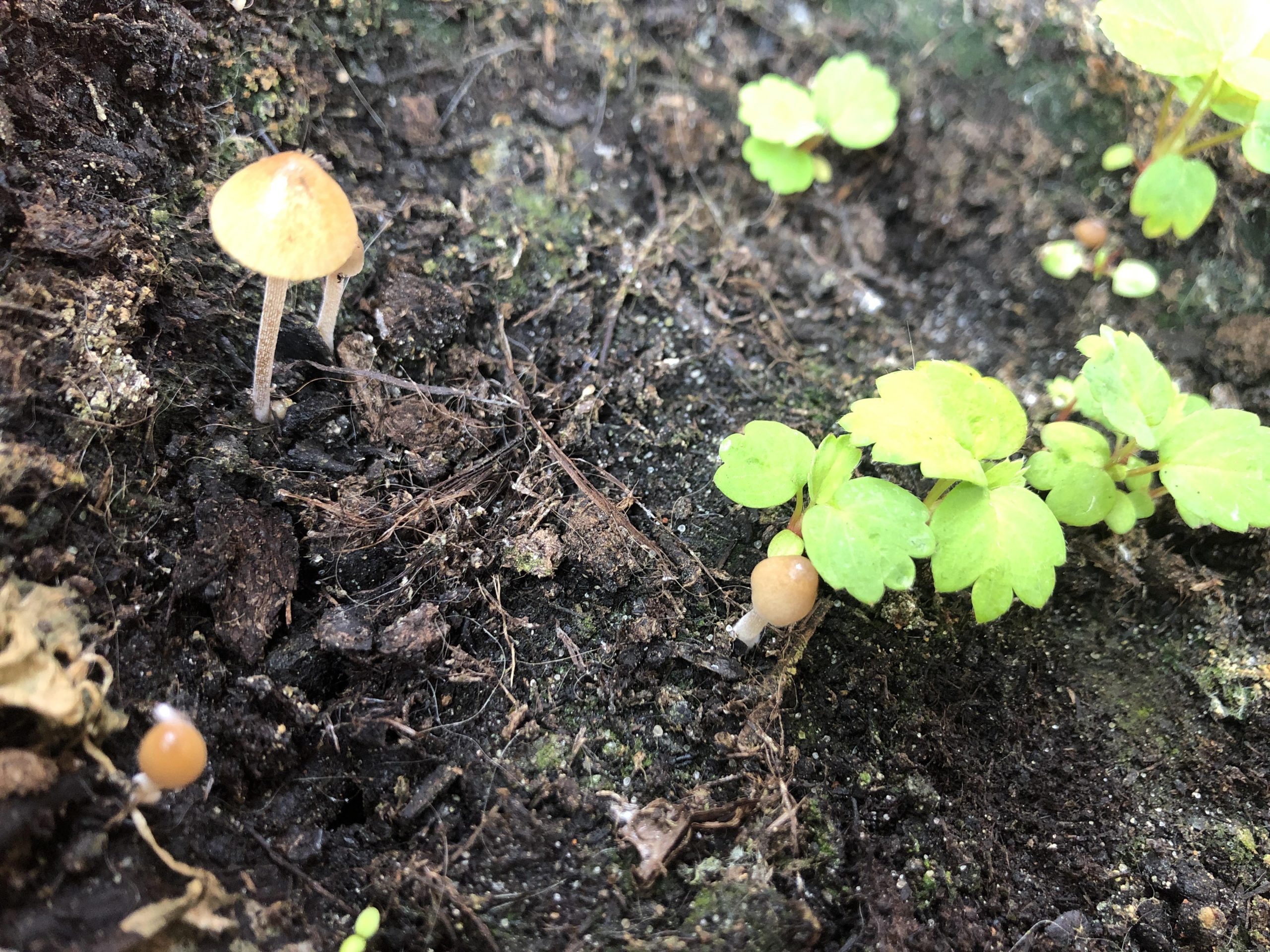Mushrooms Growing in Strawberry Plants: A Fascinating Occurrence
Strawberry plants provide the perfect environment for mushrooms to thrive. Although an uncommon sight it’s not unusual to find mushrooms popping up in strawberry beds. This peculiar phenomenon piques the curiosity of many gardeners. In this article we’ll explore what’s behind mushrooms invading strawberry territory and how to manage their presence.
Why Mushrooms Love Strawberry Plants
Mushrooms being fungi feed on decaying organic matter. They produce mycelium, a network of fungal filaments that grow in soil and leaf litter. Strawberry beds contain rich, moist soil amended with compost or rotting leaves – ideal nutrition for mushrooms! Below are the key reasons mushrooms may emerge amidst your strawberries
Organic Mulch: Mulching strawberry plants with compost, wood chips, or other organic matter fuels mushroom growth. As these mulches decay, mushrooms feast on the nutrients.
Mycorrhizal Association: Many mushrooms form symbiotic relationships with plant roots. These mycorrhizal fungi trade nutrients absorbed from the soil for sugars from the plant. Strawberries often harbor mycorrhizal fungi, inadvertently benefiting mushrooms too.
Moisture: Mushrooms thrive in damp conditions. Overwatered, poorly draining strawberry beds mimic their preferred habitat. Straw provides extra moisture retention.
Shade: Mushrooms flourish in shaded environments. Densely planted strawberry beds with large leaves generate shade and humidity ideal for mushrooms.
Acidic Soil: Strawberries prefer slightly acidic soil (pH 5.5-6.5). These conditions also appeal to mushrooms, especially when rich in organic matter.
The Impact of Mushrooms on Your Strawberries
Mushrooms are decomposers that pose little harm to living strawberry plants. However, their presence can affect your crop:
Nutrient Competition: Mushrooms may compete for nitrogen and phosphorus, but likely not enough to substantially impact plant growth.
Moisture Depletion: The large mycelium network can absorb moisture, potentially drying out strawberry roots.
Space Invasion: Mushrooms emerging in thick clusters can physically displace plants and smother strawberry growth.
Beneficial Effects: Mycorrhizal mushrooms can enhance nutrient absorption, water retention, and disease resistance for plants.
Overall, mushrooms are not a major threat to established strawberry plants. But monitoring their spread helps prevent overcrowding and unnecessary resource competition.
Managing Mushrooms in Strawberry Beds
If mushrooms start overtaking your strawberry patch, here are some organic, non-toxic ways to regain control:
- Reduce Watering: Eliminate excessive moisture that mushrooms crave by watering only when the top few inches of soil are dry.
- Improve Drainage: Incorporate compost, aerate soil, or create raised beds to prevent soggy conditions.
- Limit Mulching: Apply thinner mulch layers, avoid contact with crowns, and use inorganic options like gravel.
- Increase Light Exposure: Widen row spacing and prune leaves to reduce shade and humidity within beds.
- Remove Mushrooms: Pluck mushrooms as they appear to prevent spore spread. Discard in sealed bags.
- Rotate Crops: Avoid continually planting strawberries in the same beds where mushrooms are established.
- Apply Salt or Vinegar: Lightly sprinkle table salt or spray white vinegar on mushrooms to halt growth.
- Introduce Beneficial Fungi: Certain fungi can displace mushrooms, including Trichoderma and mycorrhizal species.
With attentive garden maintenance and moisture control, mushrooms in strawberry beds can be contained. But take care not to damage your strawberries in the process. A few sporadic mushrooms likely pose no serious risk to your bountiful berry harvest!
What To Do About MUSHROOMS In The Garden?
FAQ
Why are there mushrooms growing in my strawberries?
Is it bad if mushrooms are growing in my potted plants?
Are mushrooms growing in my plant edible?
How to get rid of fungus on strawberry plants?
- The Ultimate Guide to Growing Strawberries in Raised Beds - August 8, 2025
- No-Dig Garden Beds: The Easiest Way to Grow a Beautiful Garden - August 6, 2025
- How to Protect and Preserve Wood for Raised Garden Beds - August 6, 2025

